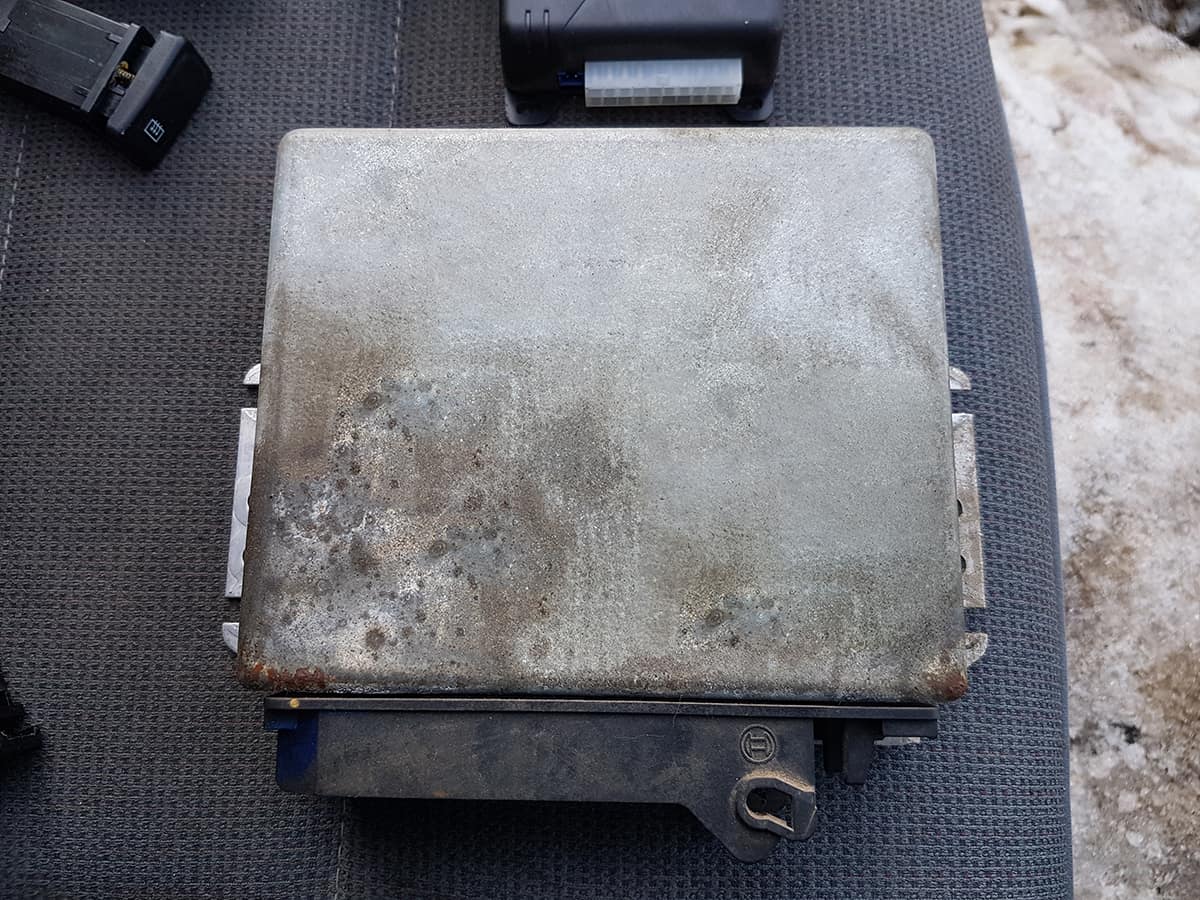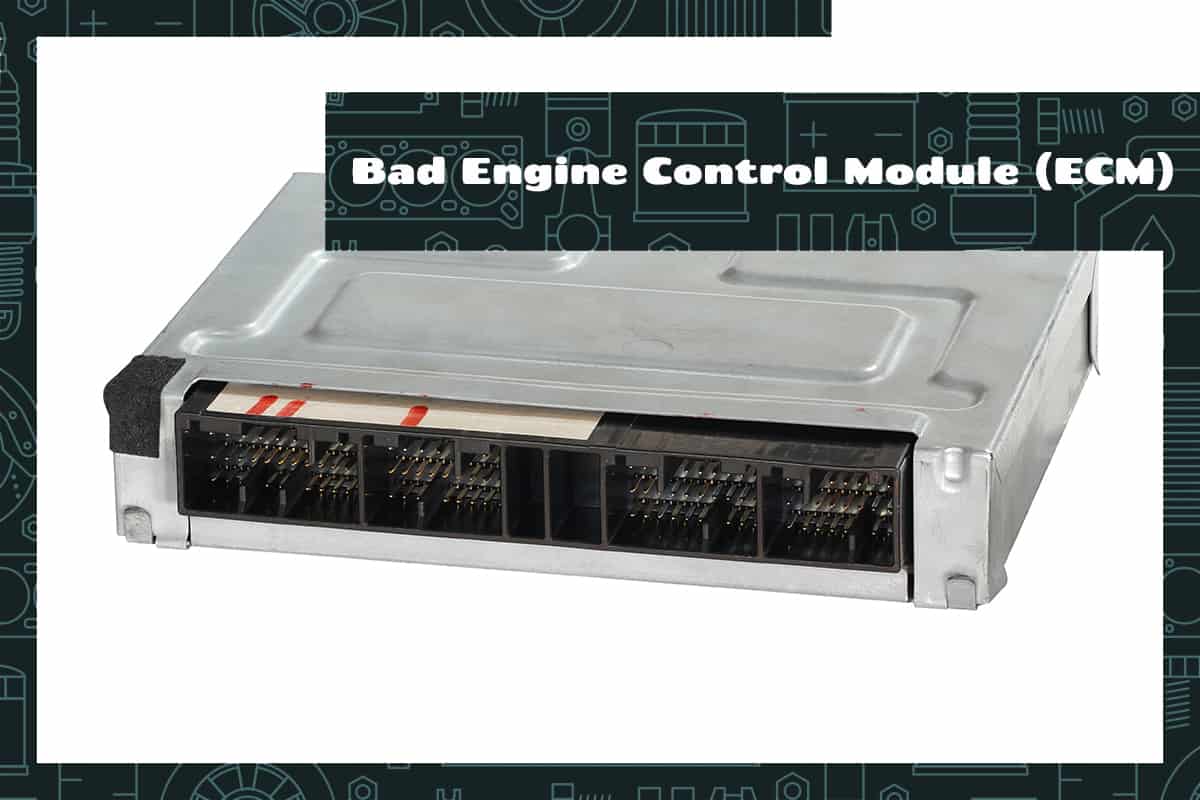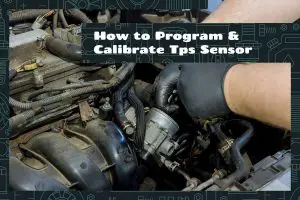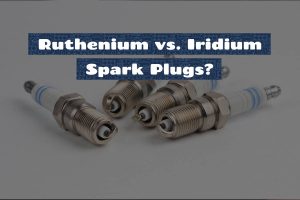The Engine Control Module (ECM controls various functions, like fuel mixture, ignition timing, and emissions controls. For one reason or another, the ECM can fail, leading to several issues in your car’s operation.
Signs of a bad ECM can include:
- Check engine light comes on
- Poor engine performance
- Unusual fuel consumption
- Difficulty starting the engine.
In this article, we will dive deeper into the intricacies of a bad ECM. We will identify the symptoms and causes of a bad ECM and explore options for repair or replacement.
A Quick Look at the Engine Control Module (ECM)

Have you ever wondered how your car just “knows” when to do things? That’s all thanks to the Engine Control Module (ECM).
The ECM, often referred to as the engine control unit (ECU) or powertrain control module (PCM), is a type of electronic control unit that manages a series of actuators within the internal combustion engine to ensure optimal engine performance. It is responsible for controlling functions such as fuel injection, ignition timing, and emission controls.
The ECM receives data from numerous sensors throughout your vehicle and based on that information, adjusts the operations to optimize your car’s performance, fuel economy, and emissions.
For example, the ECM controls the amount of fuel that goes into your engine based on the data it receives from the oxygen sensor. If the oxygen sensor signals that the engine is running lean (not enough fuel), the ECM responds by increasing the fuel injection duration.
Common Symptoms of a Bad ECM
A bad ECM starts showing signs of trouble, but if you don’t know what to look for, you might miss them. Here are some of the most common symptoms of a failing ECM that you should keep an eye out for.
1. Check the Engine Light
The ECM monitors many components of your vehicle and lights up this warning signal if it detects any issues. However, remember that many different problems can cause the ‘Check Engine’ light to turn on, not just a bad ECM.
2. Poor engine performance
You may notice that your car doesn’t accelerate as smoothly as it used to or it doesn’t have as much power. This is because the ECM controls the air-fuel mixture that goes into the engine. If it’s not working correctly, it might send the wrong instructions, leading to an imbalanced air-fuel mixture and poor engine performance.
3. Unusual fuel consumption
The ECM ensures that the right amount of fuel is used for combustion. A malfunctioning ECM may inject more fuel than necessary, leading to increased fuel consumption.
4. Difficulty in starting the engine
This is because the ECM controls the fuel injection and ignition systems, both of which are crucial for starting the engine. If the ECM isn’t working correctly, it might interfere with these systems, making it hard to start the car.
5. Unpredicted engine stalling or misfire
Stalling happens when the engine suddenly stops running, while misfiring occurs when the engine doesn’t fire (or ignite the fuel-air mixture) at the right time. Both of these issues can be caused by a malfunctioning ECM, as it might send incorrect instructions to the engine.
Causes of a Bad ECM
Issues like poor engine performance or unusual fuel consumption can signal a bad ECM. But what makes an ECM go bad? Let’s delve into the most common causes.
1. Short circuit or electrical issues
The ECM is an electronic unit, so it’s vulnerable to any electrical faults in your vehicle. For instance, a power surge can damage the ECM’s circuitry, or a short circuit elsewhere in your car could also affect the ECM. Electrical problems could also arise from faulty wiring, corroded connectors, or even water damage.
2. Faulty sensors
If sensors (engine speed sensor, temperature sensor, oxygen sensor, throttle position sensor) sends wrong information, the ECM can make incorrect decisions that affect your car’s performance. For instance, a faulty oxygen sensor might tell the ECM that the engine is running lean when it’s not, causing the ECM to inject more fuel than necessary.
3. Age and wear and tear
ECMs aren’t immune to the effects of time and use. As your car ages, so does the ECM. Over time, this can lead to wear and tear of the electronic components within the ECM, causing it to fail.
4. Heat and vibrations
The conditions under the hood of a car can be quite harsh. The ECM, located in this environment, is constantly exposed to heat from the engine and vibrations while the car is running. Over time, these harsh conditions can damage the ECM and lead to failure.
5. Incorrect software updates or tuning
The ECM’s software can be updated or tuned to improve vehicle performance. However, if this is done incorrectly, it can cause the ECM to malfunction.
Repairing or Replacing a Bad ECM

A bad ECM can be treated. If the ECM is not functioning as it should, you have a few options. You can either repair it or replace it. Let’s discuss these options further.
1. ECM Repair
Repairing an ECM can sometimes be an option, but it really depends on the specific issue. Problems like minor electrical faults or software glitches can often be fixed. For instance, a software issue might be solved by updating the ECM’s firmware, while an electrical problem could be addressed by fixing the wiring or replacing a faulty sensor. But remember, only a professional should attempt to repair an ECM.
2. ECM Replacement
If the ECM is severely damaged, for example, by a short circuit or extensive wear and tear, it may need to be replaced. Replacing the ECM involves installing a new unit in your car. A replacement ECM will need to be programmed to match your vehicle’s specifications.
How to Replace the ECM by Yourself
Replacing an ECM is a serious job that needs a lot of precision. Always remember: if you’re not comfortable doing this, it’s best to take your car to a professional. But if you’re up for a challenge, here’s a guide to help you replace the ECM.
1. Gathering the necessary tools
Before starting any task, you need to have the right tools. For this job, you’ll need:
- A new ECM: Make sure it’s the right one for your car.
- Basic hand tools: Screwdrivers, socket set, and wrenches.
- OBD-II scanner: This helps you read trouble codes and check the new ECM.
2. Safety first
Disconnect the negative terminal of your car’s battery. This ensures you won’t accidentally get a shock while working. Safety always comes first!
3. Locating the old ECM
Find where your ECM is located in your car. It’s usually on the passenger side, either under the hood or inside the cabin. Consult your vehicle’s manual if you’re not sure where it is.
4. Removing the old ECM
To remove the old ECM, you’ll first need to disconnect the wiring harness connected to it. Then, unscrew the bolts holding it in place. Be careful not to damage any of the surrounding parts.
5. Installing the new ECM
Now, it’s time to put the new ECM in. Place it where the old one was and screw it securely in place. Then, reconnect the wiring harness.
6. Reconnecting the battery and testing the new ECM
Reconnect your car’s battery, then start the engine to check if the new ECM is working correctly. You can use the OBD-II scanner to make sure there are no trouble codes.
7. Programming the new ECM
New ECMs often come without any programming, meaning they won’t work properly until they’re programmed for your specific vehicle. This usually needs special software and expertise. If you’re unsure about this step, speak to a professional mechanic







